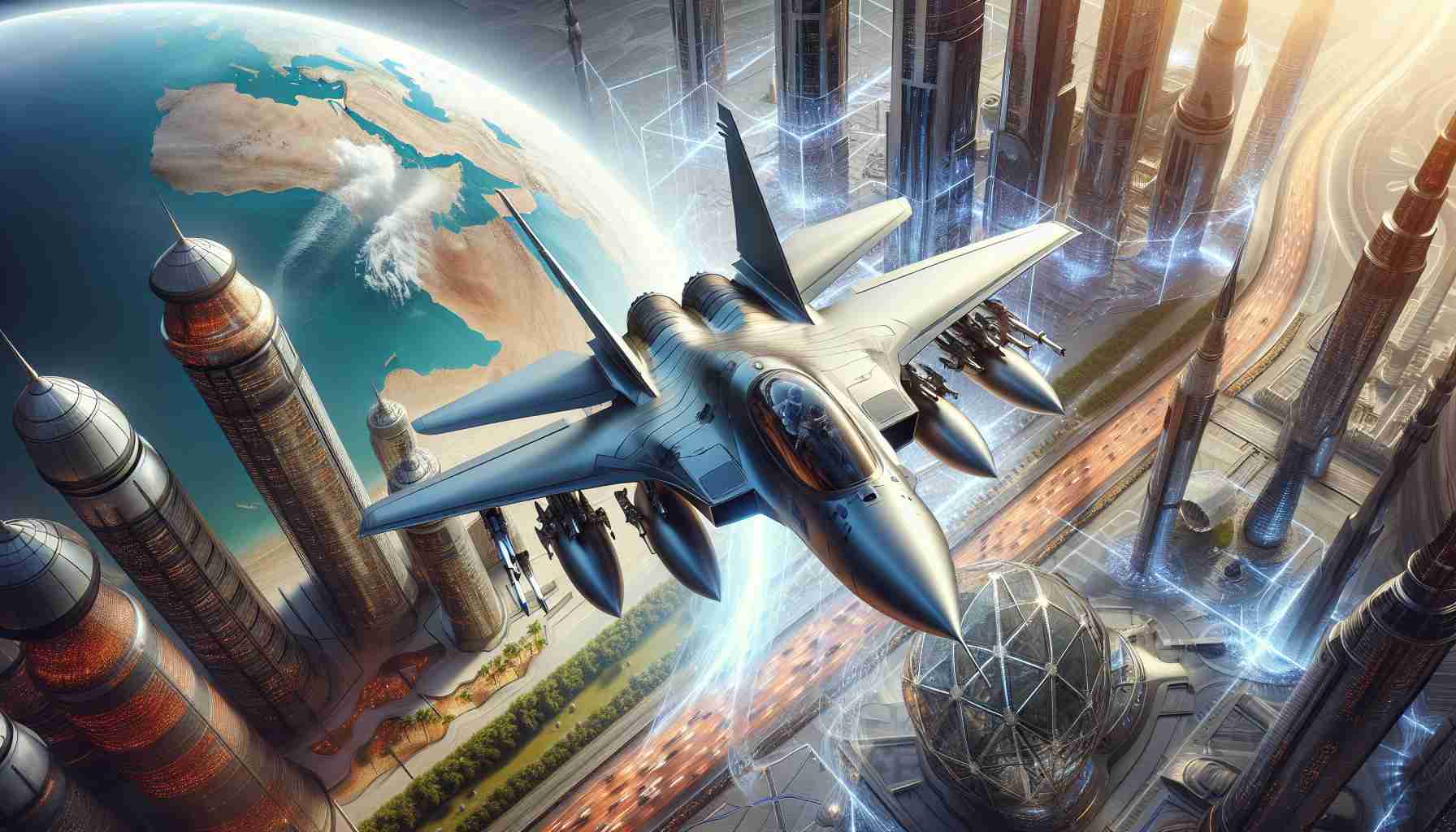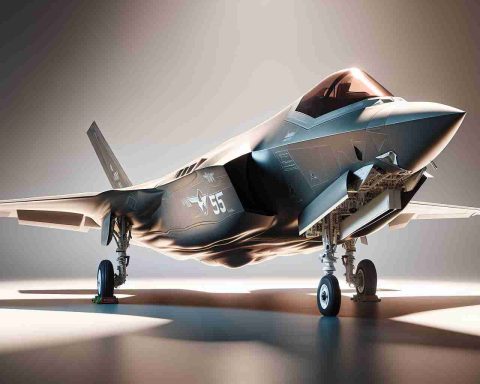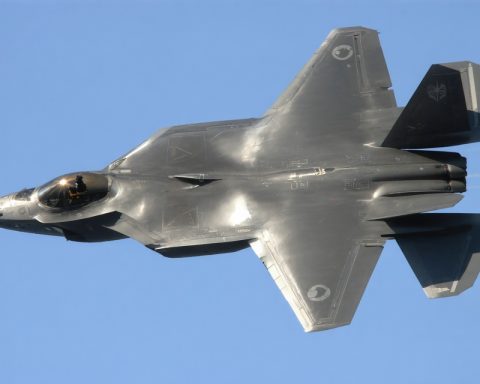Iran’s Pursuit of Advanced Fighter Jets
Iran is eyeing an acquisition of Russian Su-35 Flanker-E jets as a strategic move to enhance its military capabilities against regional foes. This initiative comes amid reports that a deal has been finalized for Tehran to receive 24 Su-35 fighters, originally intended for Egypt, reflecting Iran’s ongoing cooperation with Russia amid the Ukraine conflict.
The initial negotiations on this sale garnered attention in March 2023, as the Iranian Air Force is dominated by aging U.S. and Soviet-era aircraft. In this context, the addition of the Su-35 could represent a significant modernization of Iran’s aerial combat power. Observers have noted the urgency for Iran to upgrade its fleet, especially following missile attacks by Israel that targeted Iranian military assets.
Historically, Iran’s interest in advanced military aircraft has faced obstacles, notably during attempts in the late 1990s to procure MiG-29 fighters from Moldova. The United States intervened, ultimately purchasing the aircraft to prevent Iran from boosting its military capabilities, fearing the implications for regional stability.
The MiG-29 had been a formidable adversary in its prime, deployed widely in the Soviet Union and proving to be a challenge to U.S. jets like the F-15 and F-16. The American acquisition not only denied Iran essential military resources but also led to extensive analysis of the MiG’s technologies, influencing air combat strategies in the years to follow.
Geopolitical Ramifications of Iran’s Military Modernization
Iran’s venture into acquiring sophisticated fighter jets like the Russian Su-35 Flanker-E carries profound implications that resonate beyond mere military strategy. As the nation seeks to bolster its aerial capabilities, it could significantly shift the balance of power in the Middle East, fostering an environment ripe for tension among neighboring countries—a situation already heightened by longstanding rivalries.
The potential integration of advanced Russian technology into Iran’s defense arsenal not only poses challenges for Israeli and Gulf State security but also solidifies the burgeoning Iran-Russia alliance. This partnership may embolden Iran to pursue more aggressive foreign policies, including in Syria and Iraq, thereby exacerbating regional instability. As the global economy watches closely, such dynamics could disrupt energy markets, particularly given Iran’s position in the oil sector, where geopolitical tensions often lead to fluctuations in supply and prices.
From an environmental standpoint, a renewed focus on military enhancements invites scrutiny concerning the implications for defense spending versus social investments, particularly in a region like Iran where natural resources are under extreme pressure. Future trends may see a rise in arms races, compelling countries to invest heavily in defense rather than addressing pressing issues like climate change or economic reform.
In summary, Iran’s pursuit of advanced military aircraft not only signifies a shift in regional military dynamics but also serves as a litmus test for global diplomatic relationships in an era characterized by geopolitical realignments and pressing environmental challenges. The long-term significance of this move will likely serve as a focal point for international discourse on security, stability, and sustainability in the coming years.
Iran’s Bold Move: The Strategic Acquisition of Su-35 Fighter Jets Explained
Iran’s Pursuit of Advanced Fighter Jets
Iran is making significant strides in modernizing its military capabilities, primarily through the acquisition of advanced fighter jets. The recent focus has been on securing Russian Su-35 Flanker-E jet fighters, with reports confirming a deal for Tehran to receive 24 Su-35 fighters, initially earmarked for Egypt. This development underscores Iran’s growing defense ties with Russia, particularly in light of the ongoing geopolitical tensions arising from the Ukraine conflict.
Features of the Su-35 Fighter Jets
The Su-35 is known for its impressive speed, maneuverability, and advanced avionics systems. Here are some notable features:
– Thrust Vectoring: Enhances aerial agility, making it difficult for opponents to target in dogfights.
– Advanced Radar: Equipped with phased-array radar capable of tracking multiple targets at long ranges.
– Extended Range: With in-flight refueling capabilities, the Su-35 can execute long missions, increasing operational reach.
These characteristics suggest that the addition of such aircraft would significantly boost Iran’s aerial capabilities in contested environments against regional adversaries.
Use Cases for the Su-35 in Iran
The acquisition of Su-35 jets can be pivotal for Iran in several strategic areas:
– Enhancing Air Defense: With aging aircraft predominating the Iranian Air Force, the Su-35 can serve as a modern deterrent against threats from Israel and other regional powers.
– Support for Proxy Forces: These advanced aircraft could be used to provide air support for Iran’s allied militias in regional conflicts, enhancing their combat effectiveness.
– Regional Power Projection: Possession of advanced fighter jets may elevate Iran’s influence in Middle Eastern geopolitics.
Limitations and Challenges
While the addition of the Su-35 will provide Iran with modern capabilities, there are potential limitations:
– Pilot Training: Transitioning to a new fighter platform requires extensive pilot training, which may take time to develop.
– Logistics and Maintenance: Maintaining advanced aircraft poses logistical challenges, especially given international sanctions that could limit access to spare parts.
– International Repercussions: The acquisition could provoke further military build-up from neighboring countries, potentially leading to an arms race in the region.
Pricing and Market Analysis
The financial aspect of acquiring the Su-35 jets remains a topic of discussion. While specific pricing details may not be disclosed publicly, reports indicate that Su-35s typically cost approximately $30 million each. Given that Iran is set to receive 24 jets, the total estimated investment could be around $720 million.
Security Aspects and Controversies
The deal has raised concerns among Western nations, particularly the United States and its allies. The precedent set by Iran’s acquisition of the Su-35 may lead to increased tensions in the region, prompting other nations to bolster their air defenses or seek advanced military capabilities.
Future Trends and Predictions
As geopolitical dynamics evolve, Iran’s strategic partnerships, particularly with Russia, are likely to strengthen. The successful integration of the Su-35 into Iran’s military may herald a shift in the balance of power in the Middle East, compelling neighboring countries to reassess their defense strategies.
In sum, Iran’s acquisition of advanced fighter jets such as the Su-35 marks a calculative step towards modernizing its military. It highlights Tehran’s ambition to enhance its defense capabilities and assert its position in a volatile region, all while navigating complex international relations and potential repercussions.
For more on military developments and defense strategies, you can visit defense.gov.












